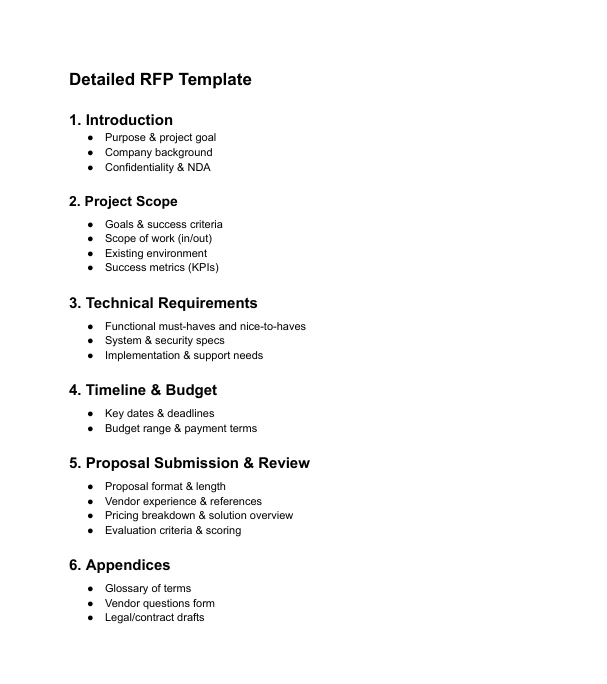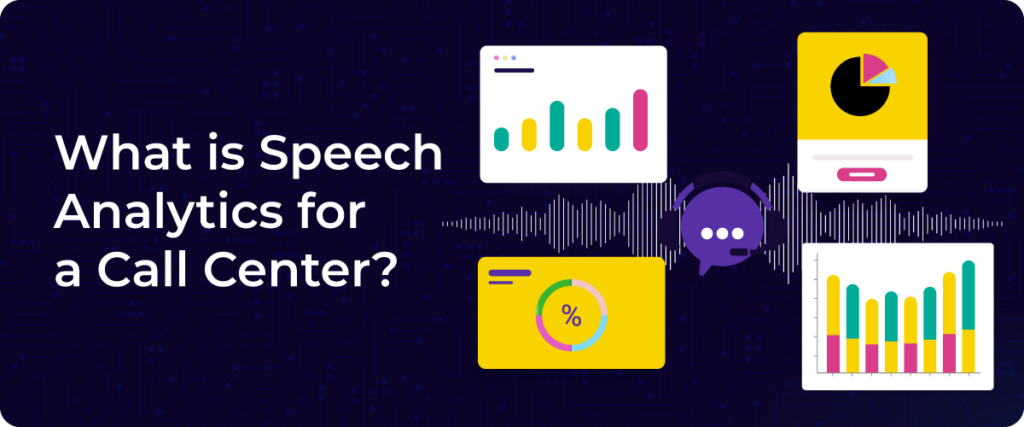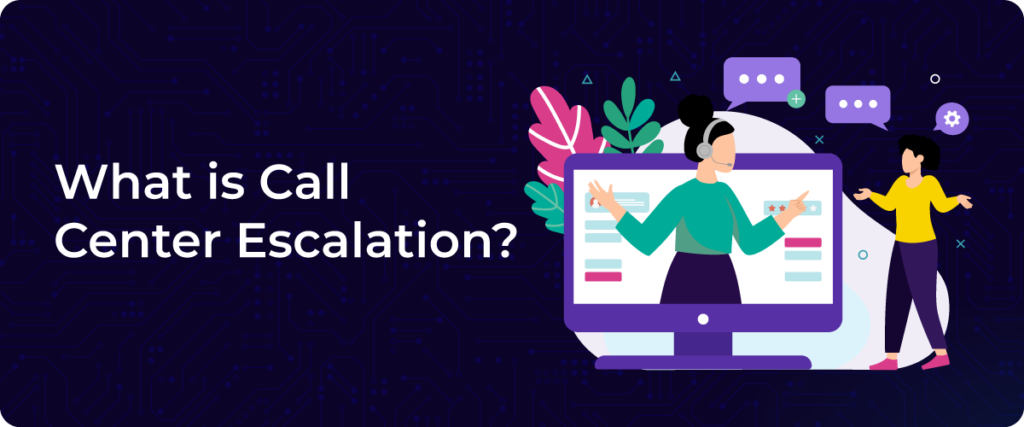Did you ever think about how companies find the right partners for their crucial projects? The partners that truly fit and not just feel “good enough”?
Behind every smart business decision lies a process that replaces guesswork with proper structure and strategy. This is called Request for Proposal (RFP), a transparent method that allows companies to compare, evaluate and select the best partner for their requirements.
It’s nothing less than a blueprint for collaboration. A RFP request for proposal simply helps businesses express their vision and goals clearly, invite proposals and make confident, data-backed decisions.
In this guide, we’ll walk you through everything you need to know about the RFP process: what an RFP means, how it works, and what a strong RFP example looks like. You’ll also find templates, practical tips, and insights into how modern AI platforms like ConvoZen simplify RFP management from start to finish.
Whether you’re part of a procurement team, a project leader, or an enterprise buyer, this guide will help you navigate RFPs with clarity, efficiency, and confidence.
What is a Request for Proposal (RFP)?
A RFP (request for proposal), is a formal document organizations use when they’re looking for vendors to fulfill a specific need, whether that’s software development, marketing strategy, or a new automated contact center solution.
It’s essentially your open call for solutions.
You describe the project, outline your objectives, specify requirements, and invite vendors to respond with proposals showing how they’d solve your problem, what they’d deliver, and why they’re the right choice.
An RFP request for proposal brings structure to what could otherwise be a messy, biased, or unclear selection process. It ensures transparency, fairness, and clear documentation from day one, which is exactly why governments, enterprises, and SaaS companies use it as a standard procurement practice.
Why Do Businesses Need an RFP?
Let’s face it, most projects without an RFP rarely end well because they start with assumptions, hunches and decisions made in a hurry.
However, an RFP process ensures that:
- Transparency: Every vendor gets the same information, which makes the selection process fair and unbiased.
- Clarity: Teams know exactly what they’re asking for, which saves time and avoids miscommunication.
- Comparability: With structured proposals, decision-makers can easily compare vendors side-by-side.
- Risk reduction: A documented process protects organizations from compliance, budget, and performance risks, and with tools like AI Agents for Compliance, the process becomes even more reliable.
- Accountability: Everyone involved, from procurement to project managers, operates on the same expectations.
In short, an RFP ensures that every choice you make is informed, justified, and backed by data.
Benefits of an RFP (Request For Proposal)
The RFP process isn’t just about paperwork; it’s a smart way to turn chaos into order. Here’s how it helps:
- Saves time and money: With predefined requirements and a structured review process, you avoid endless calls and revisions.
- Encourages innovation: Vendors often come up with creative solutions you hadn’t thought of, just like in product innovation strategies
- Boosts competition: When multiple vendors compete on the same terms, you get better quality and pricing.
- Improves stakeholder alignment: Everyone involved, technical, financial, and operational teams, sees the same picture.
- Enhances vendor relationships: When expectations are clear from day one, collaborations become smoother and more productive.
See? It’s not bureaucracy. It’s smart business.
Key Components of a Request for Proposal
Before you start writing, it helps to know what an RFP includes. A strong RFP typically has these key components:
- Project Overview: A brief description of what the organization needs and why.
- Scope of Work: A detailed explanation of deliverables, timelines, and expectations.
- Company Background: Information about your organization and what makes this project important.
- Proposal Requirements: What vendors need to include in their submissions (pricing, timeline, team details, etc.).
- Evaluation Criteria: The parameters you’ll use to score and compare proposals. Use quality assurance tools to make scoring consistent.
- Timeline and Deadlines: Dates for submissions, questions, evaluations, and final decisions.
- Contact Information: Who vendors should reach out to for clarifications.
That’s it, no need to overcomplicate it. Once you have these sections, you already have a clear RFP outline.
The 5-Step RFP Process
The RFP process may sound intimidating, but it’s really just five simple steps. Let’s walk through them.
1. Identify the Need
Start by defining what you want to achieve. Is it new software, marketing support, or infrastructure upgrades? The clearer you are about your goals, the stronger your RFP will be.
2. Draft the RFP
Create a document that outlines your goals, scope, and evaluation criteria. Include all necessary details, but keep it concise and easy to follow.
3. Distribute the RFP
Send your RFP request for proposal to selected vendors or publish it on your procurement portal. Make sure all participants receive the same information.
4. Evaluate Responses
Once proposals come in, review them against your criteria: pricing, experience, quality, and innovation. Use a scorecard evaluation framework to make fair comparisons.
5. Select and Award
Finally, pick the vendor that best aligns with your goals. Then, close the loop by providing feedback to all participants.
See? Five steps, zero chaos.
RFP Examples
Don’t worry, RFPs aren’t as complex as they sound. Here’s a visual example that shows just how straightforward a good RFP Request for Proposal can be.

RFP vs RFQ vs RFI: What’s the Difference?
If you’ve ever come across RFP, RFQ, and RFI, it’s easy to feel like they’re part of some corporate alphabet soup. But in reality, these are just three stages of the same process: finding the right vendor, with the right solution, at the right price.
Let’s break them down so you’ll never mix them up again.
| Term | Full Form | Purpose | When to Use |
| RFP | Request for Proposal | To gather detailed proposals with creative or technical solutions from vendors | When you know what problem you need to solve but want to explore different ways to solve it |
| RFQ | Request for Quotation | To collect precise pricing details for clearly defined products or services | When you already know what you want and are comparing vendors mainly on cost |
| RFI | Request for Information | To gather general information about vendor capabilities, products, or services | When you’re still researching and want to understand the market before making decisions |
Still confused? Let’s make it even simpler:
- Start with an RFI when you’re exploring the landscape, maybe researching how AI automation is transforming industries. You’re asking vendors, “What do you offer, and how do you do it?”
- Move to an RFP request for proposal when you have a clear project goal but need vendors to pitch their solutions. You’re saying, “Here’s what I need. Show me how you’d make it happen.”
- Finish with an RFQ when everything’s defined, you know exactly what product or service you want and are simply asking, “How much will it cost?”
When used together, these three documents create a structured, step-by-step procurement process that helps you make confident and data-driven decisions.
See? It’s not a tangle of acronyms, it’s just a logical flow to get from curiosity to contract.
How to Get Better Results from Your RFP Process
You’ve written your RFP request for proposal. Now what? Here’s how to make sure your submission and management process go smoothly.
- Stay clear and concise: The easier your RFP is to read, the better the responses.
- Set realistic deadlines: Give vendors time to create thoughtful proposals.
- Use digital tools: Platforms like ConvoZen’s Agentic AI Workflow Automation can automate tracking, analysis, and collaboration in real time.
- Ask the right questions: Focus on outcomes, not just features.
- Keep communication open: Encourage vendors to ask clarifying questions before submission.
Following these best practices ensures your RFPs get quality responses and fewer back-and-forths.
Simplified and Smarter RFP Management by Convozen
Managing RFPs manually can feel like herding cats, dozens of emails, follow-ups, and spreadsheets. That’s exactly where ConvoZen steps in.
ConvoZen.AI brings AI-powered RFP management into one place, making it simple to create, distribute, evaluate, and monitor proposals with precision. It helps teams automate repetitive tasks, gain real-time insights, and collaborate seamlessly across departments.
With ConvoZen, you can:
- Track every stage of your RFP request for proposal workflow in real time
- Use intelligent templates to accelerate creation
- Automate scoring and vendor evaluations
- Monitor vendor performance and project progress
- Generate reports that support data-driven decisions
So whether you’re running a single RFP or managing hundreds across departments, ConvoZen helps you stay in control without complexity.
See? The RFP process was never that complicated; it just needed the right tools.
FAQs
It’s a formal document that invites vendors to submit proposals for a project, outlining how they’ll deliver the required outcomes.
The RFP process includes five steps: identify the need, draft, distribute, evaluate, and select the best proposal.
A clear structure with project goals, scope, budget, evaluation criteria, and deadlines. The simpler it is, the better the responses.
AI platforms like ConvoZen streamline RFP request for proposal management by automating creation, tracking, and evaluation in one place.
An RFP guide ensures teams follow a structured, transparent, and repeatable process that saves time and improves vendor selection.


